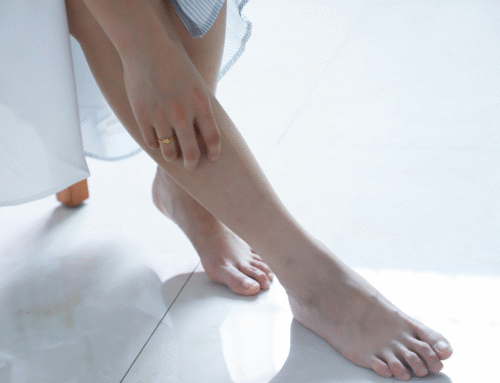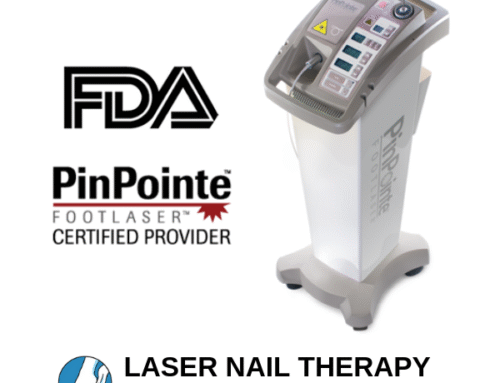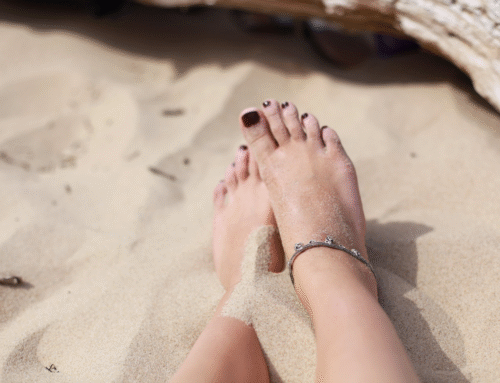My family members all have nail fungus, what should we do? If you are struggling with a nail fungus infection you should schedule a free consultation with our foot doctors as Laser Nail Therapy. They will provide the best treatment option for you.
Why My Whole Family Has Toenail Fungus: Causes and Prevention
If multiple members of your family have toenail fungus, it doesn’t necessarily mean the condition is inherited. Toenail fungus itself is not genetic, but the risk factors that make someone more susceptible can run in families. Things like naturally sweaty feet, slower nail growth, flat feet, or a weaker immune response can be shared traits. This makes it easier for the fungus to take hold when someone is exposed.
More commonly, toenail fungus spreads in families simply because everyone shares the same environment. Fungus thrives in warm, damp places, and it can linger on bathroom floors, in showers, inside shoes, and even on nail clippers. When one person develops a fungal infection, it’s easy for others in the household to come into contact with the same fungal spores and become infected as well. This is especially true if someone has athlete’s foot, which often spreads to the nails over time.

Toenail Fungus in the Household: How It Spreads and How to Stop It
Preventing family-wide reinfection requires treating the existing fungus and taking simple hygiene precautions. These include disinfecting shared showers, not walking barefoot in common areas, avoiding the sharing of nail tools, washing socks in hot water, and wearing breathable footwear. Addressing athlete’s foot promptly and keeping feet clean and dry can significantly reduce the chance of the fungus spreading between family members.
If your entire household struggles with toenail fungus, you’re not alone and effective solutions are available. Professional treatments, such as laser therapy, topical antifungals, or oral medications, can help clear the infection. Treating everyone who is affected at the same time often leads to better long-term results and reduces the risk of the fungus continuing to circulate within the family.
Types of Toenail Fungus
Toenail fungus, or onychomycosis, can develop in several different forms. This depends on the type of fungus involved and how the infection spreads through the nail. The most common type is distal subungual onychomycosis. It occurs when dermatophyte fungi invade the nail bed from the tip or sides of the nail. This form typically begins with a yellow or white spot near the edge of the nail. It then gradually spreads inward, causing the nail to thicken, discolor, and crumble at the edges. Because it affects the underside of the nail, it can be difficult to treat and often requires long-term therapy.
Another type, known as white superficial onychomycosis, is caused by fungi that attack only the surface of the nail plate. This results in white, chalky patches on the nail’s surface that can often be scraped away. It tends to progress more slowly. It is usually easier to treat since the infection does not penetrate deeply into the nail.
A less common form is proximal subungual onychomycosis, which begins at the base of the nail near the cuticle and spreads upward as the nail grows. This type is often associated with weakened immune systems. It is also associated with other underlying health conditions and may signal a more serious systemic issue.
Another rare form, candida onychomycosis, is caused by yeast rather than dermatophyte fungi. It typically affects fingernails more than toenails. It causes swelling, redness, or even separation of the nail from the nail bed.
Finally, total dystrophic onychomycosis is considered the end stage of long-standing infection. The nail becomes completely discolored, thickened, and deformed. Recognizing the specific type of toenail fungus is important because it helps determine the most effective treatment. Whether it is topical, oral, or laser-based, it improves the likelihood of achieving clear, healthy nails.

We offer free consultations
We offer free consultations to see if laser treatment is right for you. At our clinic, laser nail therapy with the PinPointe Footlaser is our specialty. We focus on this treatment because it offers a safe, effective, and medication-free solution for stubborn toenail fungus. We understand how frustrating it can be to deal with thick, discolored nails and how overwhelming it is to sort through different treatment options.
During this consultation, our foot doctors will evaluate your nails, discuss your health history, and determine whether laser treatment is the best choice. During your consultation, we will:
- Examine your nails to confirm the diagnosis and assess severity.
- Explain exactly how the PinPointe FootLaser works and what you can expect during and after treatment.
- Give you a realistic timeline for seeing clearer, healthier nails.
- Answer any questions you have about nail care and preventing reinfection.
Our goal is to help you confidently move forward with a treatment plan that finally addresses your toenail fungus safely and effectively, without the side effects or drug interactions of oral medications.
Schedule a Consultation
If you have any signs of toenail fungus, don’t wait. Our nail doctors offer the PinPointe laser treatment, the most effective and safe method for curing toenail fungus. Call us today at (800) 672-0625 or visit our website to schedule a free consultation at a location near you.





